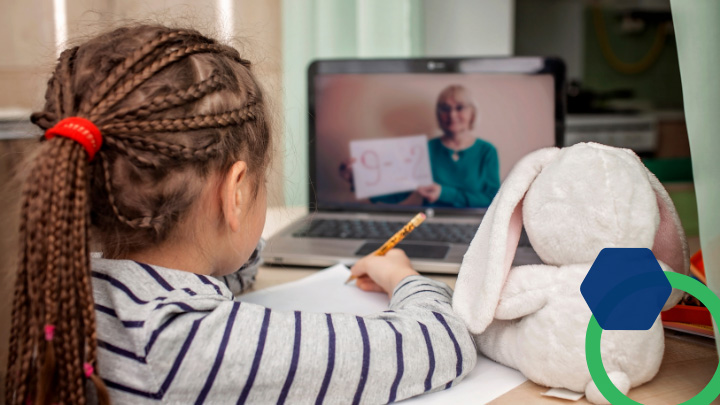With most schools’ doors closed for the remainder of the year, many educators and families fear that students with disabilities will be at a disadvantage. While there are challenges to supporting students with disabilities in online learning, students can certainly thrive with intentional instructional decisions, a willingness to adapt curriculum, and an enthusiasm to explore some new tools. As a special educator, I work hard to differentiate my instruction to meet the needs of my students in a distance-learning setting. Here are some strategies I use to support my students with disabilities:
1. Create Differentiated, Personalized Learning Opportunities
In a traditional classroom, it can be hard to provide differentiated instruction to all students, all the time. Distance learning, however, can make some of the challenges easier to overcome. Try the following:
- Assign different work to different students. The social stigma of receiving a different task is erased in a virtual setting. Consider having students self-assess to determine what they need to practice and then creating individual assignments with Google Classroom or Seesaw.
- Personalize instruction to topics that interest students differently. While we may worry that students with disabilities will fall behind, it’s exciting to imagine students doing more learning during this time because they get to pursue topics that interest them. Consider using choice boards or hyperdocs to allow students to choose the work they want to do.
- Provide texts at differentiated reading levels. Tools such as ReWordify can be really helpful for this. Consider a strategy that uses Newsela, a resource that offers texts at different reading levels.
2. Create Predictable Learning Routines
Many students with disabilities benefit from predictable routines. Establish a schedule of communication with students and a routine for how and when you will assign students work. Consider the following examples:
- Create a layered systems approach: Establish routines for social-emotional check-ins and community building activities, a process for students to set goals for the week, and a predictable way for you to assign work and offer support to students.
- Create individualized schedules for students: Consult example daily schedules from Khan Academy or WideOpen Schools for ideas about how to create daily schedules for students with disabilities.
3. Provide One-on-One Support
Finding the time to provide individual support to all students with disabilities is often a huge challenge in a traditional setting. Use distance learning as a chance to provide the 1:1 support that many students with disabilities need.
- Help students schedule 1:1 conferences: Teach students how to schedule 1:1 conferences with teachers with tools like Calendly or a Google Form.
- Monitor progress toward students’ goals: Use 1:1 conferences to help students review their data and track their progress toward their IEP goals.
- Reteach misconceptions via video: Teachers can meet with students over video conference (for example, Zoom or Google Hangout) to re-teach key material, and record that meeting. Students can then watch that video as many times as they need to master the material.
4. Use Tech Tools to Provide Common Accommodations
Digital tools make providing many common accommodations easy. Consider the following examples:
- Provide step by step directions: Try Screencastify or Loom, both of which allow you to make short explanatory videos to accompany what viewers see on their screens.
- Schedule synchronous read alouds With tools like ShowMe or VoiceThread, you can record yourself reading a text for students. Students could also use Natural Readers or Read&Write for Google to listen to a computer-generated recording.
- Assign graphic organizers to specific students: Use Google Classroom and Google Docs to tag certain graphic organizers to certain students.
- Provide visuals and videos: Try Sutori, which makes it easy to link images and videos to a students’ learning path.
- Make content accessible: Google has great accessibility features, such as a screen-reader and a screen-magnifier.
5. Be a Resource to Families
More than anything, we have to remember that this is a stressful time for families. As much as we can, we want to be a resource for families who are now acting as caregivers, teachers, therapists, and advocates for their child with special needs. Consider making videos for families where you model how you work with a student and consider sharing some of the resources below:
- For families with children with Autism Spectrum Disorders, many organizations are offering free curriculum during school closures, such as The Asperger/Autism Network.
- For families with children with emotional regulation disabilities, teachers can suggest curriculum and workshops like Emotional Labs that support students in regulating their emotions.
- For families with children with learning disabilities or ADHD, Eye to Eye National has specific resources to support students.
As hard as this time period is for us as teachers, we must remember that it is that much harder for our students, especially our students with disabilities and their families. As much as we can, we must strive to support students with disabilities and their families with resources, modifications, and differentiation during distance or online learning. Hopefully, by personalizing instruction and providing direct support, we can help our students make strides in their learning this spring.








